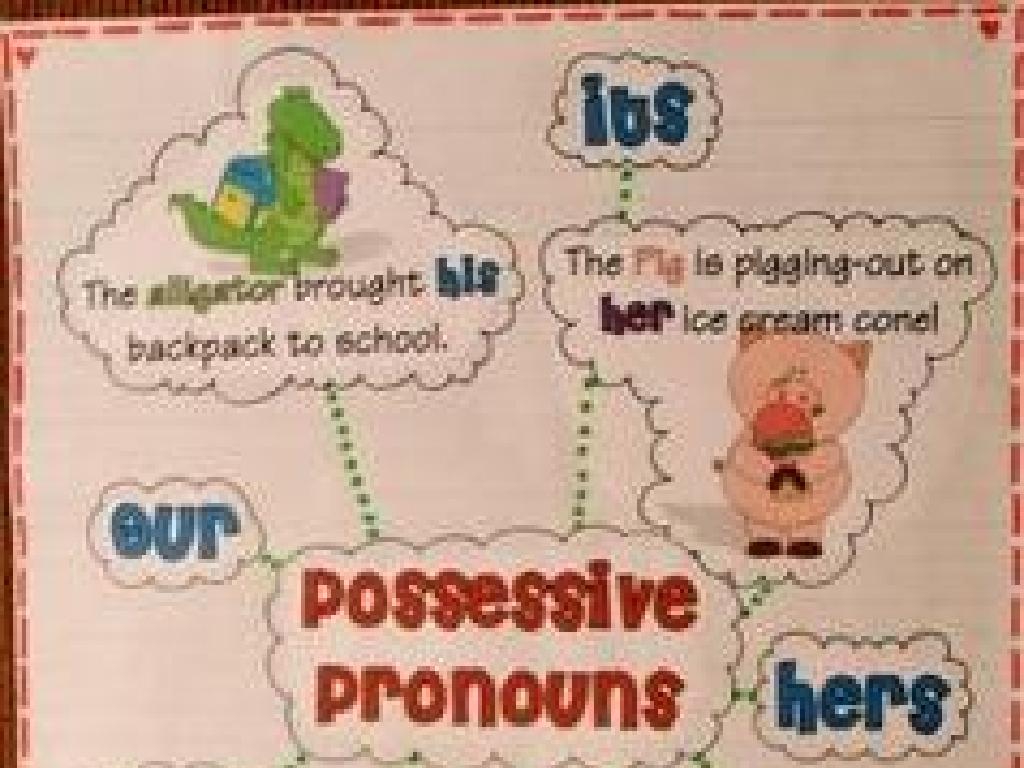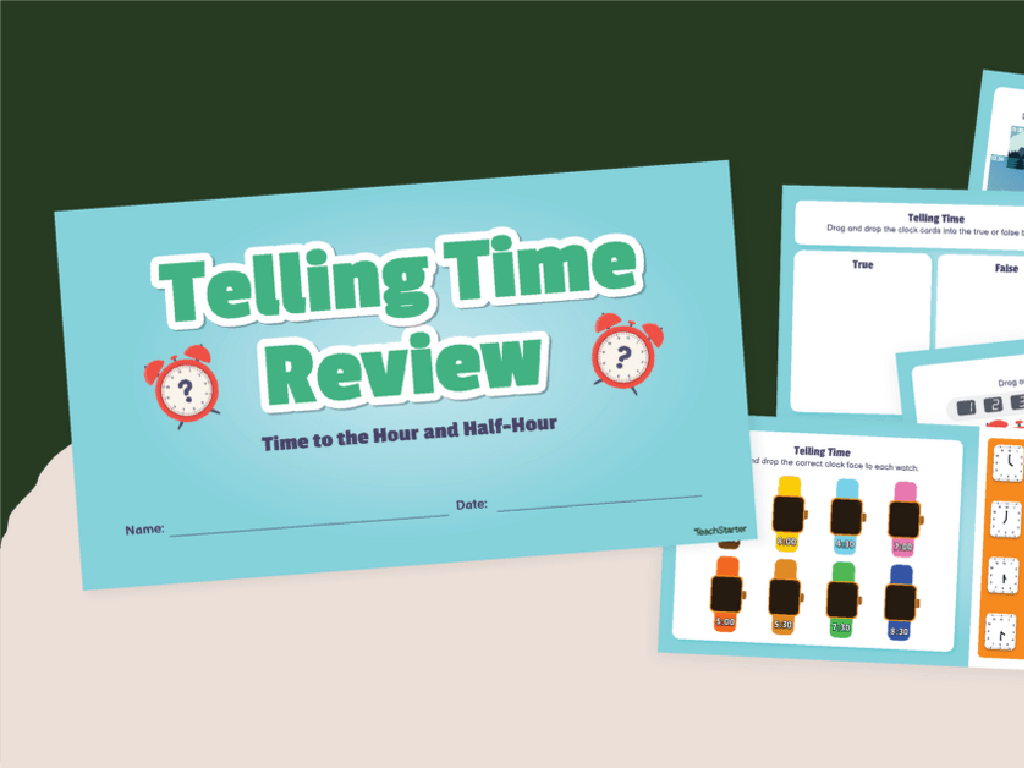Identify And Select Countries Of Africa: Region 1
Subject: Social studies
Grade: Seventh grade
Topic: Africa: Geography
Please LOG IN to download the presentation. Access is available to registered users only.
View More Content
Exploring Africa: Diverse Geographies
– Africa’s vast landscape
– Second largest continent with deserts, mountains, and rivers
– Diversity in geography
– Varied climates from rainforests to arid deserts
– Focus on Region 1
– Introduction to Northern Africa’s unique features
– Significance of Region 1
– Understanding cultural and physical landscapes
|
This slide introduces students to the African continent, emphasizing its size and the diversity of its geography. Highlight Africa as the second-largest continent, featuring deserts like the Sahara, impressive mountain ranges, and extensive river systems such as the Nile. Discuss the variety of climates and ecosystems, from the tropical rainforests of the Congo to the arid deserts of the north. Today’s focus will be on Region 1, which includes Northern Africa. Explain the significance of this region in terms of its cultural and physical landscapes, preparing students for a more detailed exploration of the countries within this region. Encourage students to think about how geography can influence culture and daily life.
Exploring Africa: Region 1 Countries
– Identify Region 1 countries
– Locate countries on a map, such as Egypt, Libya, and Tunisia
– Significance of each country
– Discuss historical, cultural, or economic importance
– Interesting facts about Region 1
– Share unique cultural practices, languages, or landmarks
– Geographical diversity
– Explore deserts, coastlines, and other landscapes
|
This slide aims to introduce students to the countries of Region 1 in Africa, which includes North African nations. Students should learn to identify these countries on a map and understand their significance in terms of history, culture, and economy. Interesting facts can include unique traditions, languages spoken, and famous landmarks like the Pyramids of Giza in Egypt. Highlight the geographical diversity of the region, from the Sahara Desert to the Mediterranean coastlines. Encourage students to research more about these countries to gain a deeper understanding of their global significance.
Physical Features of Africa: Region 1
– Major landforms and waters
– Sahara Desert, Nile River, Atlas Mountains
– Impact on people’s lives
– Landforms affect agriculture, settlement, and culture
– Unique landscapes in Region 1
– The Sahara’s vastness, Nile’s fertility, Atlas Mountains’ biodiversity
|
This slide aims to explore the physical geography of Africa’s Region 1, which includes significant features like the Sahara Desert, the Nile River, and the Atlas Mountains. Discuss how these features dictate where people live, the types of jobs they have, and their cultural practices. For example, the Sahara’s size and climate influence nomadic lifestyles, while the Nile’s waters are crucial for agriculture. The Atlas Mountains are not only a natural barrier but also a hotspot for unique plants and animals. Encourage students to think about how geography can shape their daily lives and the diversity within a single geographic region.
Cultural Highlights of Africa: Region 1
– Traditional clothing, music, and art
– Dashiki, Kente cloth, Afrobeat, Highlife music
– Languages spoken in Region 1
– Swahili, Amharic, Yoruba, and Oromo among others
– Cultural similarities across countries
– Shared histories, values, and festivals
– Cultural differences and diversity
– Unique customs, cuisines, and celebrations
|
This slide aims to give students a colorful glimpse into the rich cultural tapestry of Africa’s Region 1. Start by showcasing traditional clothing such as the Dashiki and Kente cloth, and introduce popular music genres like Afrobeat and Highlife. Discuss the variety of languages spoken in the region, highlighting Swahili, Amharic, Yoruba, and Oromo. Emphasize the cultural similarities that bind these countries together, such as shared histories, values, and festivals. Also, explore the unique aspects of each culture, including customs, cuisines, and celebrations, to appreciate the diversity within the region. Encourage students to research more about one aspect of the culture that interests them and be prepared to discuss it in the next class.
Economic Activities in Africa: Region 1
– Main economic activities
– Agriculture, mining, and tourism are key sectors.
– Geography’s influence on economy
– Climate and terrain shape agriculture and resource extraction.
– Examples of goods and services
– Cocoa from Ghana, diamonds from Sierra Leone, safari tours in Kenya.
– Impact on local communities
|
This slide aims to explore the various economic activities prevalent in Africa’s Region 1, which includes West and Central Africa. Students should understand how the region’s diverse geography, including its climate and natural resources, directly influences the economic activities such as agriculture, mining, and tourism. For instance, the fertile soil and favorable climate in some West African countries support the cultivation of cocoa, while the mineral-rich areas of Central Africa are known for diamond mining. Tourism also plays a significant role, with countries like Kenya offering safari experiences. Discuss the importance of these activities in providing livelihoods for local communities and contributing to the region’s economy. Encourage students to think about how these activities connect to the global market and what challenges they might present.
Challenges & Opportunities in Africa: Region 1
– Environmental & social challenges
– Issues like deforestation, water scarcity, and urbanization
– Development & cooperation opportunities
– Potential in areas like renewable energy, education, and agriculture
– Student-led solution brainstorming
– Think of ways to address challenges using local resources
– Impact on local and global communities
|
This slide aims to discuss the various environmental and social challenges faced by countries in Africa’s Region 1, such as deforestation, water scarcity, and the effects of rapid urbanization. It also highlights the opportunities that exist for development and cooperation in sectors like renewable energy, education, and sustainable agriculture. Encourage students to engage in critical thinking by brainstorming potential solutions to these challenges, emphasizing the importance of using local resources and knowledge. Discuss how addressing these issues not only benefits the local communities but also has a positive impact on the global stage. This will help students understand the interconnectedness of our world and the role they can play in shaping a better future.
Class Activity: Mapping Africa’s Region 1
– Receive a blank map of Region 1
– Label countries, capitals, and features
– Include countries like Egypt, Libya, and Sudan
– Engage in class discussion
– Display your completed maps
– Share and compare maps with classmates
|
This activity is designed to help students familiarize themselves with the geography of Africa’s Region 1. Distribute blank maps to each student and provide a list of countries, capitals, and significant geographical features for them to label. Encourage accuracy and neatness. After the labeling exercise, facilitate a class discussion where students can compare their maps and reflect on the activity. This will help them to consolidate their knowledge and correct any mistakes. Finally, have students display their maps on the classroom wall or in a gallery walk format. Possible variations of the activity could include working in pairs, using digital mapping tools, or assigning different regions to different groups for a larger map of Africa.






